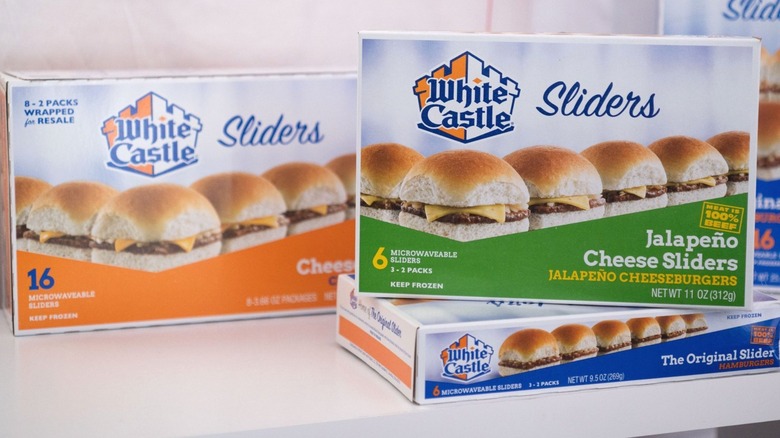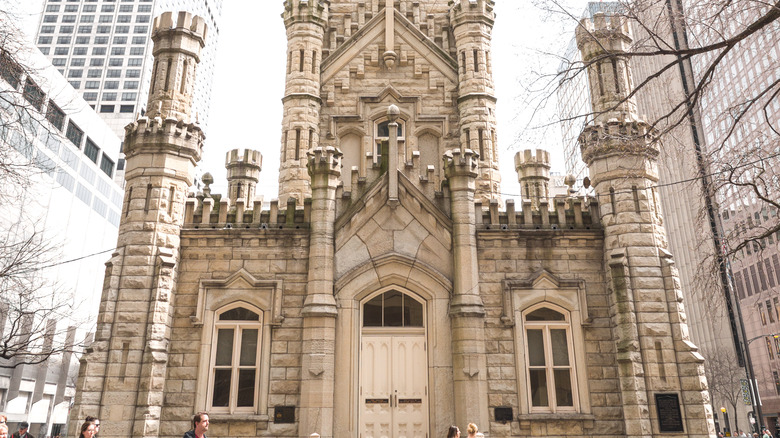How A Chicago Landmark Inspired White Castle's Design
We may receive a commission on purchases made from links.
If you ever wandered down Chicago's Magnificent Mile — as a tourist, not a jaded local — chances are you'll get a crick in your neck gaping upwards at all of the jaw-dropping buildings. Even if you've never considered yourself much of an architecture buff, the well-named Magnificent Mile will find a way of winning you over. Before your neck gives out, you'll be treated to such sights as the cathedral-like Wrigley Building, the Gothic Revival Tribune Tower once voted world's most beautiful building, and the Art Deco masterpiece at 333 North Michigan Avenue. All of this splendor lines a boulevard that was designed as Chicago's answer to the Champs Elysee.
One of the most ornate buildings on this stretch is one that Oscar Wilde, master of the witty put-down, once referred to as a "castellated monstrosity with pepper boxes stuck all over it." (This description probably came across as somewhat wittier back in the day, when pepper boxes were still a thing.) The structure's name — Water Tower and Pumping Station — reveals a utilitarian past, but today, it houses the City Gallery's local art exhibits. While this 1869 building is one of the few in the of the city to have survived the infamous Great Chicago Fire of 1871, it also has another claim to fame that should earn it a niche in the Fast Food Hall of Fame: It served as the design inspiration for White Castle's restaurants.
This is why White Castle chose such a fancy symbol
White Castle founder Walt Anderson perfected his burger cooking technique at the Wichita, Kansas hamburger stand he opened in 1916. The burgers were a huge hit, but he ran into difficulties trying to expand the business, as the fancy folk of Wichita felt hamburger stands to be low-class. In 1921, however, Anderson partnered up with visionary entrepreneur Billy Ingram. The first step Ingram took towards building a burger empire was to adopt the perfect name: "White Castle." The color stands for the pristine quality you want in your food, while the word "castle" has a certain majestic ring to it. It also conveys a sense of rock-solid steadiness meant to imply that the restaurant wouldn't be going out of business any time soon, as, indeed, they haven't.
Having chosen a name, Ingram also felt they needed to come up with a design for the new White Castles they'd be building, and it just so happens that he found a very white, very castle-like source of inspiration close at hand in the Midwest. One of the earliest such restaurants, dating back to 1930, is White Castle #16 located at 43 East Cermak Road in Chicago, just over 3 miles from the Water Tower to which it pays homage. While this historic landmark is no longer in the burger business, Chicago is home to a number of White Castles that are still serving up those famous sliders.

